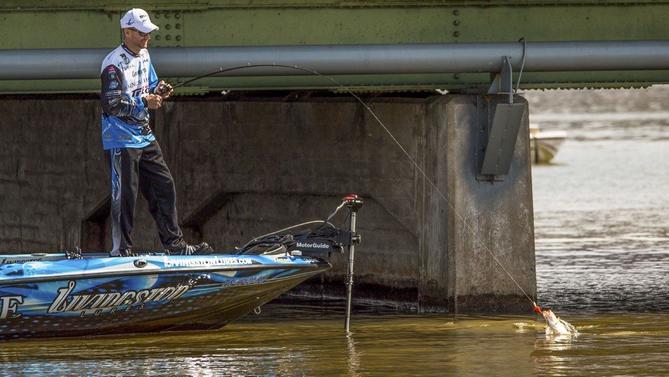

To finesse a fish, you need a lure like a jig or a worm so you can work it more slowly with moves like flipping, pitching, or drop-shot. These are lures like crankbaits, chatter baits, and spin baits.

There are some lures and baits that let you power fish, which means casting and retrieving lures over a large amount of water. Flexibility is vital when fishing for largemouth bass, so don't be wary of changing your lure or your technique if it doesn't seem to be working for you. You don't have to buy every lure in the tackle shop, however. Largemouth bass are voracious feeders and, if the mood takes them, hit almost any lure that you throw out there. Ask around at the local bait shop or fishing outfit to find out what's hatching and then look for the lure or bait that most closely resembles it. To be successful in bass fishing, match your lure to the hatch. But if you're in a more northern state, like Michigan, it might not happen until late April or May. If you're fishing someplace southern, like in Texas or Florida, you might see a spawn as early as January. When the spawn occurs depends on the day's length, the water temperature, and where you're fishing. The most auspicious time to fish for largemouth bass is during their spring spawning season. If the edge of the fish's mouth stops evenly with the fish's eye, then it's a smallmouth. If the line of the fish's mouth extends back beyond their eye, making their mouths very large, then it's a largemouth bass.

To spot the difference between smallmouth and largemouth bass, look at the fish in profile. They wait-or hold-until their prey comes by, and then they pounce. To be successful predators, bass on the prowl wait by adequate cover with enough depth to maneuver. Ducklings are also fair game for the bass. They eat smaller fish like shad or minnows or smaller amphibians like salamanders or frogs. To disturb the least number of fish and increase your chances of catching more, always work from the edges toward the center.īass eat almost anything that crosses their underwater path they are greedy hunters. Structure is the composition of the lakebed and includes features like ridges, drop-offs, and ledges. The key is to search for a tree or stump that looks a little different, especially in heavy cover, because that area is likely holding more fish. Cover refers to objects in the lake like docks, fallen trees, large rocks or boulders, or boats that provide the fish with safety from predators as well as hide them from their prey. Largemouth bass live in a shifting combination of both cover and structure. The more you know about your prey, the more likely you are to catch the prize, so here are some helpful tips for anglers just beginning their largemouth bass fishing journey. Understanding the largemouth bass, its prey, and its seasonal behavior gives you a more in-depth knowledge of this muscular, predatory fish.


 0 kommentar(er)
0 kommentar(er)
